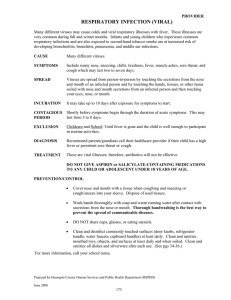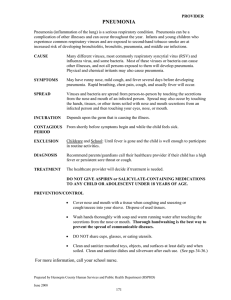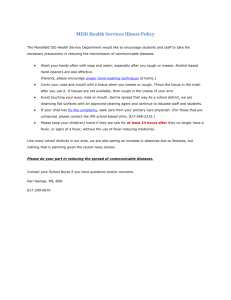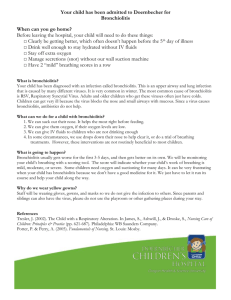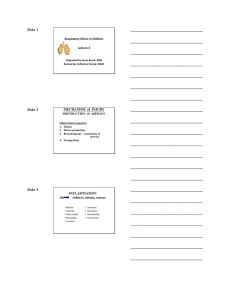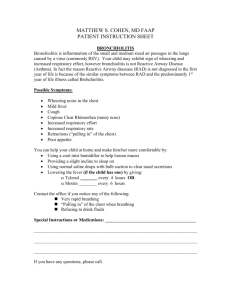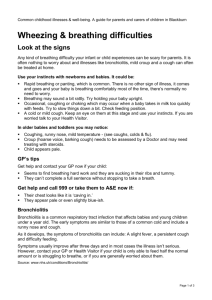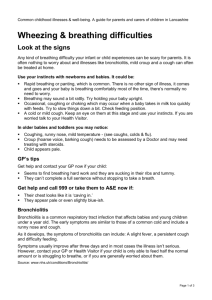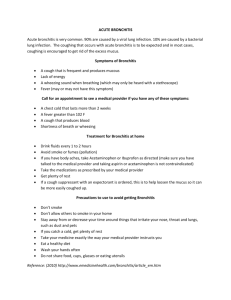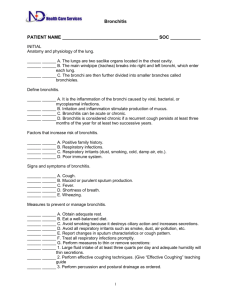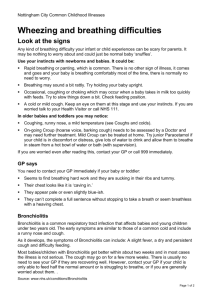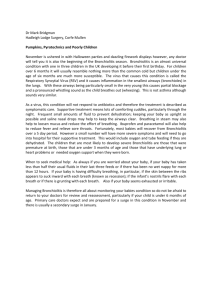BRONCHITIS, ACUTE (CHEST COLD)/ BRONCHIOLITIS
advertisement
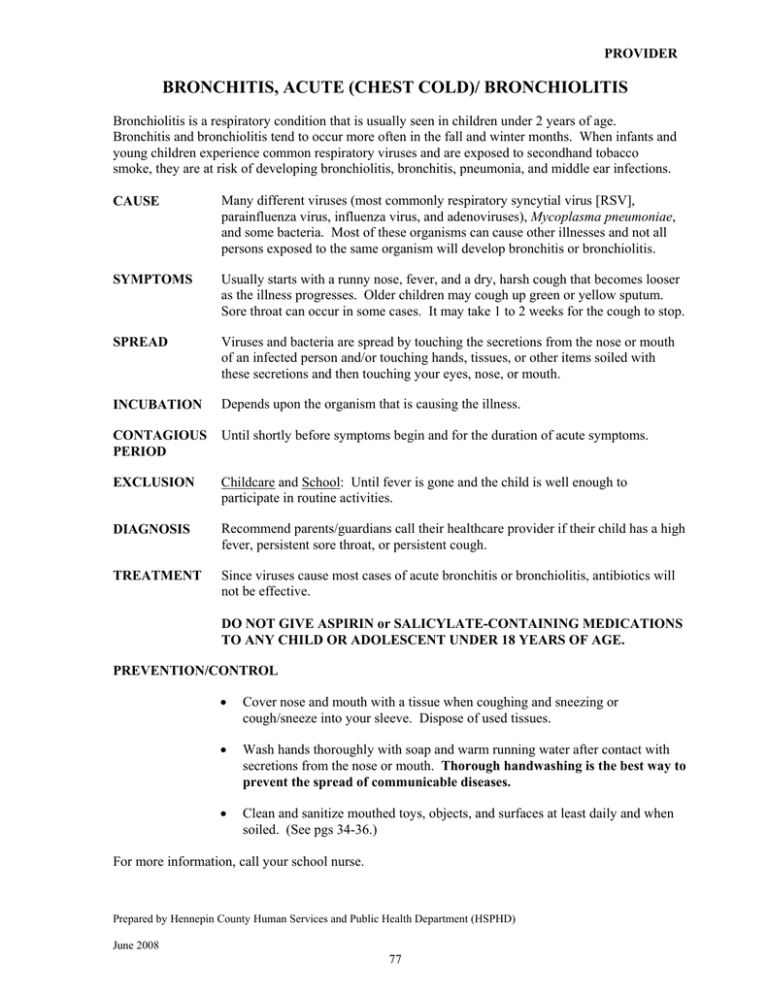
PROVIDER BRONCHITIS, ACUTE (CHEST COLD)/ BRONCHIOLITIS Bronchiolitis is a respiratory condition that is usually seen in children under 2 years of age. Bronchitis and bronchiolitis tend to occur more often in the fall and winter months. When infants and young children experience common respiratory viruses and are exposed to secondhand tobacco smoke, they are at risk of developing bronchiolitis, bronchitis, pneumonia, and middle ear infections. CAUSE Many different viruses (most commonly respiratory syncytial virus [RSV], parainfluenza virus, influenza virus, and adenoviruses), Mycoplasma pneumoniae, and some bacteria. Most of these organisms can cause other illnesses and not all persons exposed to the same organism will develop bronchitis or bronchiolitis. SYMPTOMS Usually starts with a runny nose, fever, and a dry, harsh cough that becomes looser as the illness progresses. Older children may cough up green or yellow sputum. Sore throat can occur in some cases. It may take 1 to 2 weeks for the cough to stop. SPREAD Viruses and bacteria are spread by touching the secretions from the nose or mouth of an infected person and/or touching hands, tissues, or other items soiled with these secretions and then touching your eyes, nose, or mouth. INCUBATION Depends upon the organism that is causing the illness. CONTAGIOUS PERIOD Until shortly before symptoms begin and for the duration of acute symptoms. EXCLUSION Childcare and School: Until fever is gone and the child is well enough to participate in routine activities. DIAGNOSIS Recommend parents/guardians call their healthcare provider if their child has a high fever, persistent sore throat, or persistent cough. TREATMENT Since viruses cause most cases of acute bronchitis or bronchiolitis, antibiotics will not be effective. DO NOT GIVE ASPIRIN or SALICYLATE-CONTAINING MEDICATIONS TO ANY CHILD OR ADOLESCENT UNDER 18 YEARS OF AGE. PREVENTION/CONTROL • Cover nose and mouth with a tissue when coughing and sneezing or cough/sneeze into your sleeve. Dispose of used tissues. • Wash hands thoroughly with soap and warm running water after contact with secretions from the nose or mouth. Thorough handwashing is the best way to prevent the spread of communicable diseases. • Clean and sanitize mouthed toys, objects, and surfaces at least daily and when soiled. (See pgs 34-36.) For more information, call your school nurse. Prepared by Hennepin County Human Services and Public Health Department (HSPHD) June 2008 77
